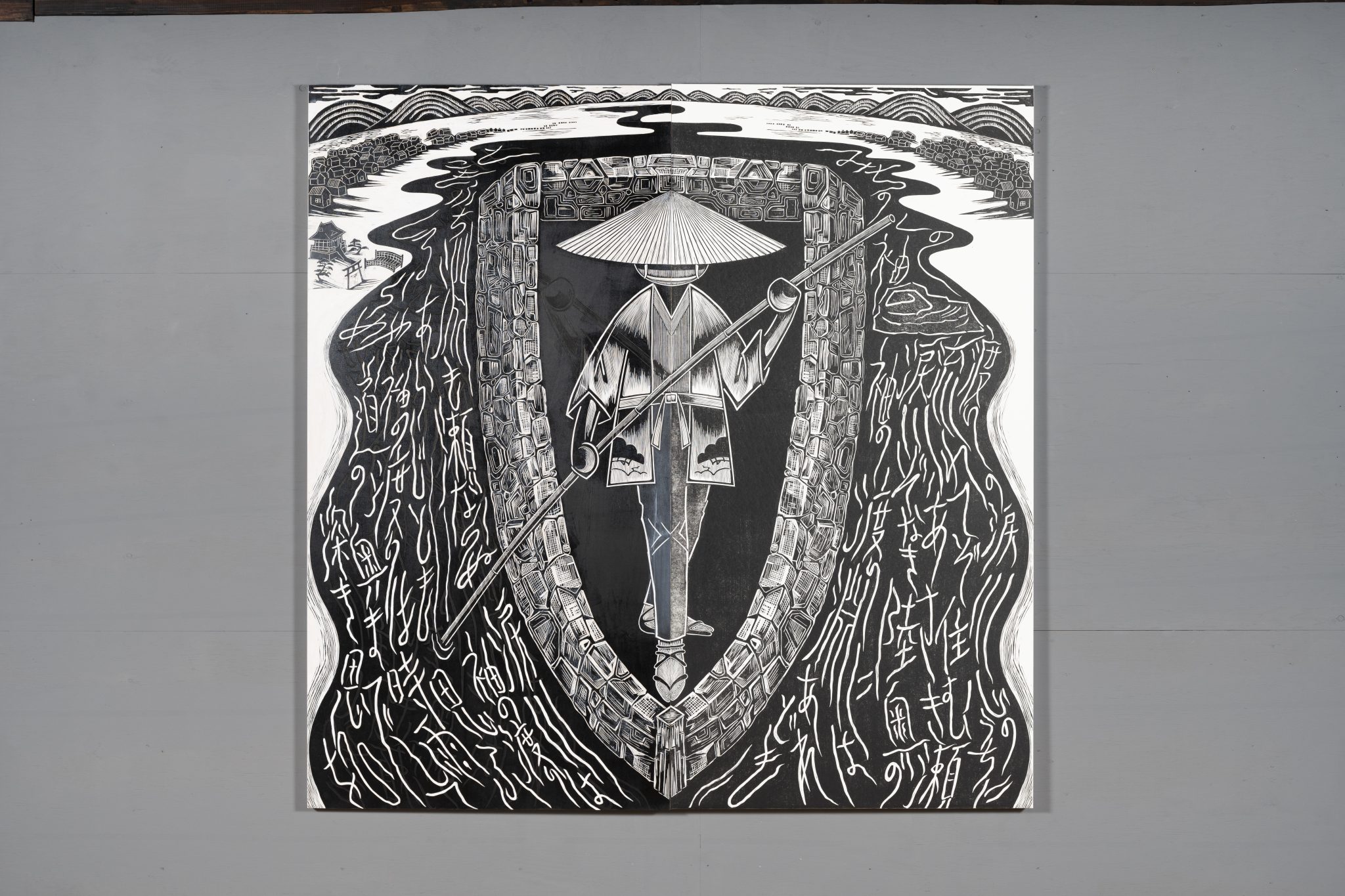New Matsushima at Mujin-to Production, Tokyo asks whether times are changing, or if they’ve always been this way
Matsushima is a coastal city on Honshu island, famous for the forested islands that populate its bay. For the Edo-era poet Bashō it was one of the most beautiful places in Japan. Sachiko Kazama is known for fusing traditional media (primarily woodblock prints) to investigate contemporary phenomena, using an aesthetic that often incorporates influences from manga and sci-fi, as well as a healthy dose of satire.
The (literal) backdrop to this exhibition is formed by 16 simple black and-white expressionist paintings on aluminium plates, hung on the gallery’s far wall. Inspired by 100-year-old tourist postcards of Matsushima’s scenic islands, these function a little like pictograms or road signs for places of outstanding natural beauty, and include plain, linear depictions of tiny islands popping out of the sea like cupcakes, decorated with mushroom-shaped trees (New Matsushima: Futago Jima; all works 2022 unless specified), islands that look like Hokusai’s famous 1831 woodblock print The Great Wave off Kanagawa (New Matsushima [Hotei jima]), and other islands surrounded by featureless humans at leisure: sailors, rowers, fishermen and paddleboarders. In short, everyone seems to be having a great time.
In front of these, in the centre of the gallery, are three partially unfurled inkworks on small scrolls (Stretching Coast [A, B and C]), arranged like pairs of tiny conjoined toilet rolls (but actually, on closer look, made on till rolls – yes, capital comes into it). They’re displayed museologically, under Perspex cases, and give glimpses of a (presumably – given how much of the works remain in the roll) vast coastline that features excavators and cranes mingling with temples, factories, office blocks and what look like coastal defences constructed of concrete blocks forming a barrier against an agitated ocean. The barrier effect is further enhanced by the fact that the gallery wall behind the scrolls is partially comprised of the remains of an old stone wall. As a sign of the current times, the depicted defences are breached by the odd waste pipe emitting what is doubtless some form of effluent into the churning waters below.
Times are changing; the natural and the human are no longer in harmony. Or perhaps it was ever thus, as in the three largescale black-and-white woodblock prints from 2023 included here. The last of them, FLOW (Sode no Watari / Namidagawa), is executed from two perspectival points of view: a plan view of a wooden boat in a river; and an elevation view of the boatman, who fills the boat, his face shielded by a conical hat, the eddies created by the boat looking like a form of calligraphy. With this flattened perspective, it appears as if the boatman were in his grave. It also looks like, somewhere under his hat, he sports vampiric fangs.
The exhibition is completed by a pair of stereoscopic images (Stereoscopic [Ishinomaki-ishi] and Stereoscopic [Nakase-naka]), each of which shows a respective coastline then and now, their contours changed between one and the other, and the now ‘improved’ by the addition of bridges and carefully reinforced (and reshaped) coastal contours. What we’re left with then is both a record of change and Bashō’s romance unmasked. Or perhaps remade, as wastelands and zombie histories as a backdrop to modern leisure.
New Matsushima at Mujin-to Production, Tokyo, 28 October – 3 December
